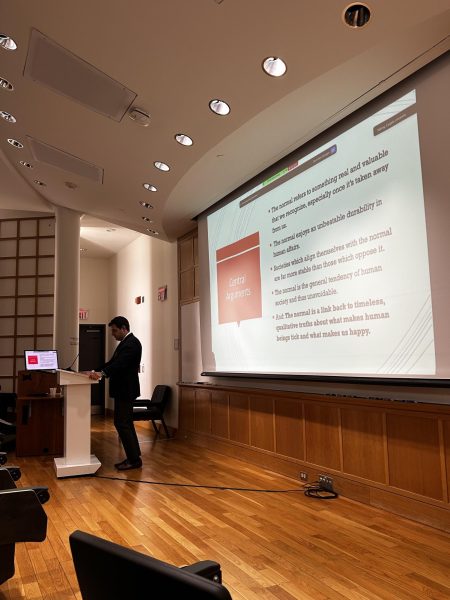Core Curriculum Re-evaluated as Part of a Two-Year Process
The two-year reinvention of the Core Curriculum began this year in preparation to release a new Core in 2020.
The Core Curriculum in its current form includes five required courses: Legacies of the Ancient World, Challenges of Modernity, Communities and Identities, Scientific Perspectives of the World and Global Engagements.
Each student must complete all five Core classes before the end of their second year.
The Core Curriculum is now undergoing a two-year revision process, which President Brian Casey said occurs every ten years.
The last revision of the Core was implemented in fall 2010. Director of the Division of University Studies Professor Nancy Ries along with the Core University Professors (UPs) will lead this year’s assessment of the Core Curriculum. The revision was announced to faculty last year at their annual White Eagle retreat.
“Running and revising the Core is an enormously complex process which involves feedback from students, faculty and alumni, plus evaluation of many forms of data, conversations, surveys [and forums],” Ries said.
The first year of the process, the 2018-2019 year, involves gathering data and engaging the community in discussions on the status of the existing Core Curriculum. Ries described this stage of the process as a sort of Core self-study.
The second year of the revision process is dedicated to inventing the actual revised Core Curriculum based on the collected data. This process can frequently take more than the allotted year, which occurred during the last revision process. The new Core will then be put into action the following fall.
Casey explained that the focus of this year’s revision may aim to increase student exposure to the arts through a creative or artistic addition to the Core Curriculum. Reis said that the surveys and feedback already collected demonstrate a student interest in adding visual and performing arts into the core curriculum. A range of performance based arts, digital media, film and fine arts will be explored in the options for new Core classes.
“We have gathered much data already which tells us that people want more arts in the Core,” Ries said. “We are keen to increase the hands-on dimensions of the Core, and to find ways to make perspectives on diversity more central to the Core curriculum.”
Sophomore Michael Tom echoed this student desire for art in the Core Curriculum.
“I think the Core Curriculum is the essence of a liberal arts education,” Tom said. “I’d love to see the program expanded, particularly with more options in the arts. Fitting in new required classes might be tough, but worth it.”
In this effort to increase student exposure to the arts, Film and Media Studies is now an offered major as of this fall.
The minor has proven to be one of the most popular on campus.
According to Colgate University News, the Film and Media Studies minor graduated 22 students yearly on average.
Ries stated there will soon be announcements to inform and invite students, faculty and alumni to participate in the revision process.
Contact Emily Rahhal, Celine Turkyilmaz and Alexandra Weimer at erahhal@colgate.edu, cturkyilmaz@colgate.edu and aweimer@colgate.edu
Emily Rahhal is a senior from Los Angeles, California double concentrating in Middle Eastern and Islamic Studies and Religion. She has previously worked...




